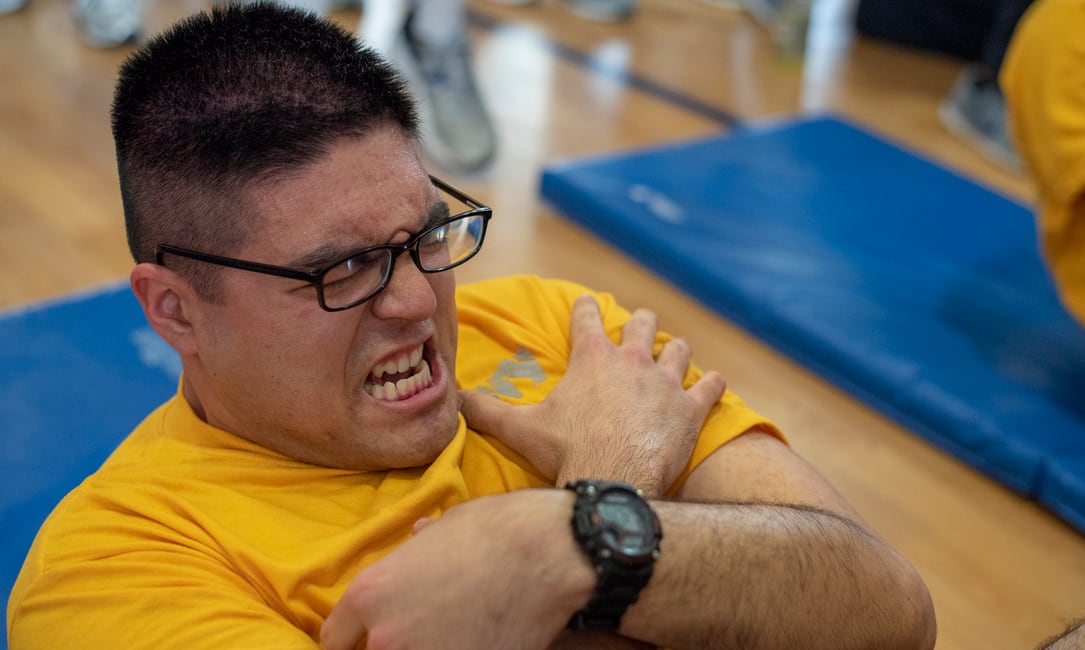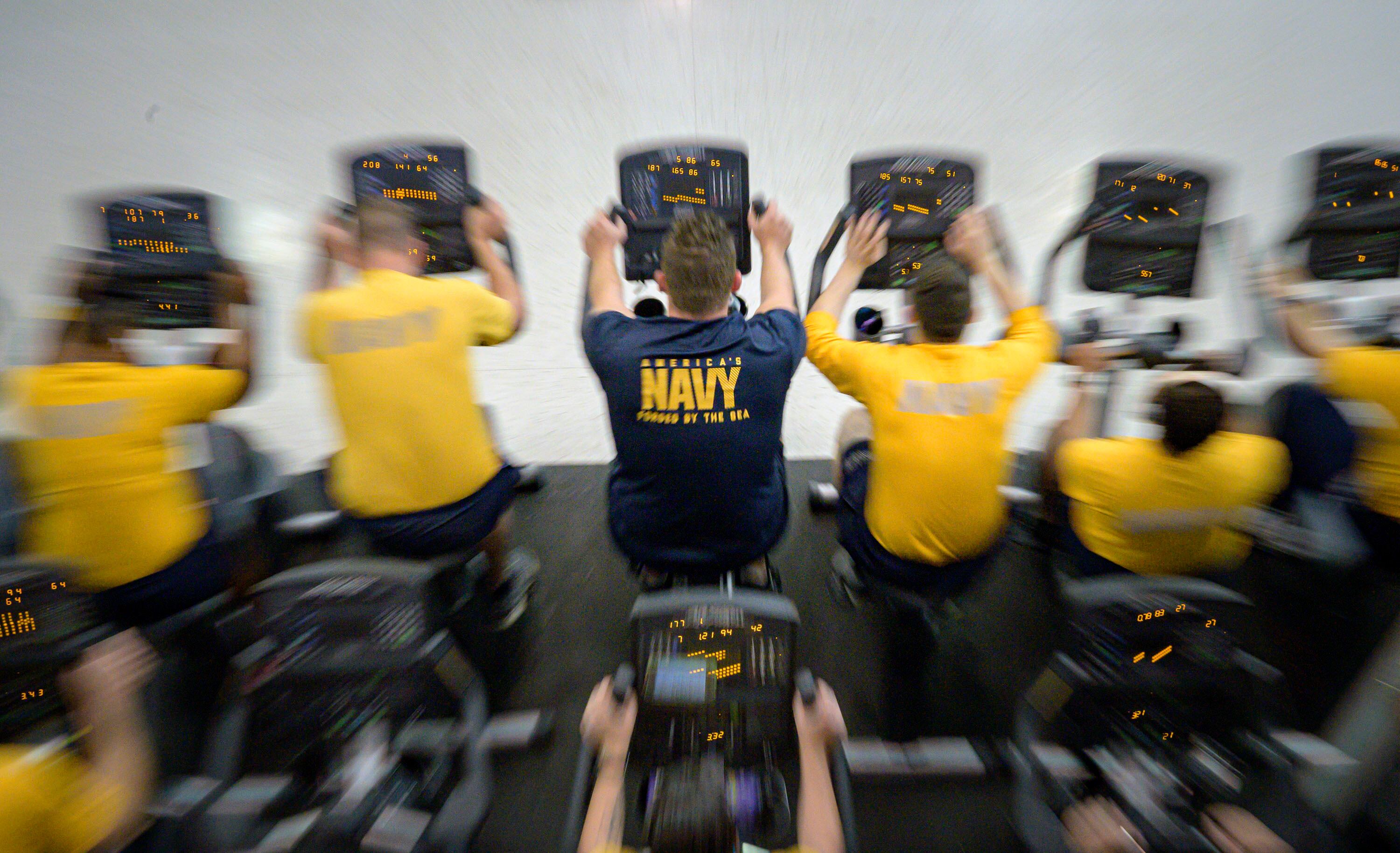The Navy is replacing the spine crushing sit-up with the plank on its physical readiness test.
Lt. Cmdr. Melissa Laird, a research physiologist who works for the 21st Century Sailor Office in behavior, development and performance, spoke with Navy Times about what’s driving the shift and offered tips about how to prepare to ace it.
“We’re really happy to introduce the plank,” Laird said. “There’s kind of been an evolution in the fitness world to really start adopting training programs that really are using a lot more functional movements and functional fitness training. That kind of differs for some of the traditional strength training in the past which is more focused on isolating one particular muscle group.”
Functional fitness exercises train muscles to work together and can make everyday tasks easier to perform. The Navy turned to the plank because it strengthens the core without requiring flexing muscles and joints and repeating the exercise is less likely to exacerbate lower back injuries.
“The plank actually uses about twice the musculature that a traditional curl-up does,” Laird said. "It’s really great at strengthening your core, giving you better posture and then really enhancing your ability to do your job. We know our sailors really train to the test. If we want them to build core strength, and we want them to do planks, then we should really test them in that modality.”
A strengthened core is important, not only for every day life, but for sailors on the job.
“A lot of the shipboard tasks involve lift, pull, push and carry and really, that is using your core as a stabilizer,” Laird said.
Former Chief of Naval Operations Adm. John Richardson announced the shift in May, including the addition of a two kilometer row test as an alternative to the cardio portion of the PRT.
The change isn’t expected to be made until the second half of 2020, Navy officials have said.
RELATED

Performance norms for genders and age brackets for the plank are still being determined. The Navy continues to gather data, with performance tests planned in four fleet concentration areas. So far, sailors have run the tests in Pearl Harbor and Mayport, Laird said.
“I think in general, the sailors are pretty happy,” Laird said. “I think that a lot of people have recognized that planks are great for you and they’re certainly easy to do. You don’t need any equipment so you can really do them anywhere. Again, our current curl-up right now ... it uses your hip flexors a lot and some people say that it may hurt their backs. I think the plank is really the way ahead and its going to be a great addition to our PRT."
For sailors interested in shaping up for the upcoming shift — or those looking to enlist in the service — Laird suggests having training programs in place that include working out at least 150 to 300 minutes per week. In addition to aerobic activities, Laird recommends resistance training, plus exercises to improve flexibility and balance.
The Navy has developed several free apps to also help serve as training guides.
The sea service eliminated the elliptical option from the cardio portion of the PRT at the end of 2017 because only about 4 percent of sailors were using it, Laird said.
Instead of the 1.5 mile run, about 47 percent of sailors opt instead for a 12-minute stationary cycle. The other option is a 500-yard swim.
The Navy has eyed rowing as a good fourth alternative, partly because it doesn’t take up much space and doesn’t require recalibration, so it can be used on submarines or other ships, Laird said.
“I think that the row is a really great modality to incorporate because it is another non-weight bearing activity so it will reduce the stress on your lower body,” Laird said. “It is also a really great cardiovascular workout because it does work about 80 percent of your musculature."
The service is testing the Concept 2 rower, Laird said. She suggested that those interested in learning more watch online tutorials.
Once the row is officially adopted, the program office will work with Chief of Naval Installations Command and Navy Morale, Welfare and Recreation to put rowing classes together, she added.
RELATED

Courtney Mabeus-Brown is the senior reporter at Air Force Times. She is an award-winning journalist who previously covered the military for Navy Times and The Virginian-Pilot in Norfolk, Va., where she first set foot on an aircraft carrier. Her work has also appeared in The New York Times, The Washington Post, Foreign Policy and more.









